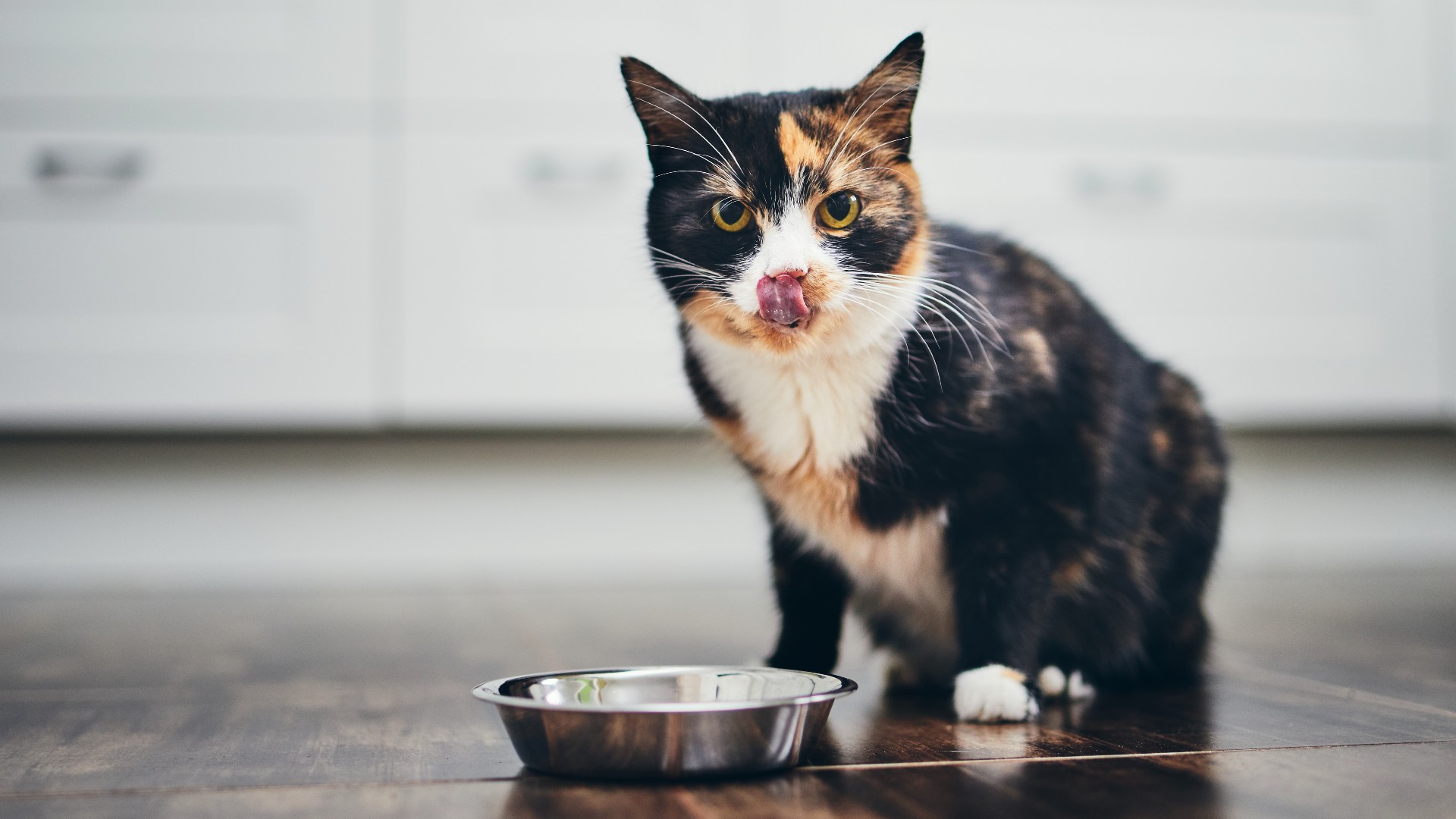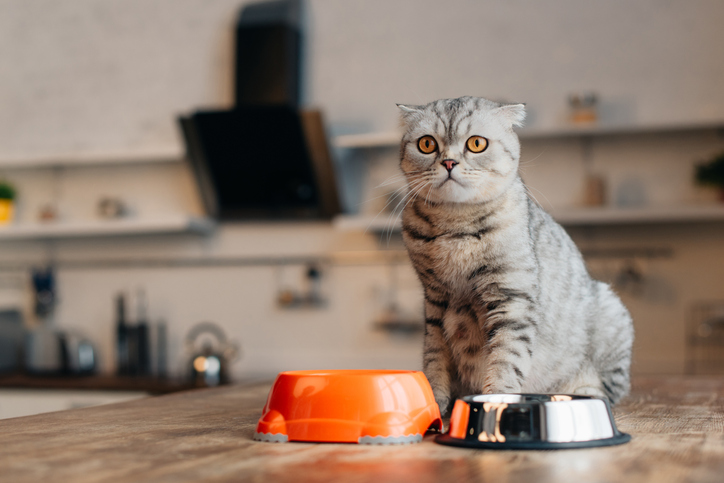What kind of bowl is best for cats?
What kind of bowl is best for cats we hear you ask? You’ll find everything you need to know here, including the safest materials and what shape to buy to banish whisker fatigue

If you’ve been wondering what kind of bowl is best for cats, you’re in the right place! While it may seem like a straightforward purchase, selecting the right mealtime vessel for your moggy is more complex than it appears.
With the best cat food bowls coming in a range of sizes, shapes, and materials, choosing the right one can feel overwhelming. While it can be tempting to grab the cheapest bowl you can find (after all, it’s just for food, right?) you’ll be amazed at the difference the right bowl can make to your kitty’s health.
When it comes to what kind of bowl is best for cats, it turns out that certain shapes can help prevent whisker fatigue while particular materials eliminate cat acne – we know, who knew such a thing existed?!
Being the loving pet parent that you are, we bet you spend a lot of time scanning the shelves for the best cat food for your furkid, so we don’t want all that effort to go to waste by having those delicious dishes go into the wrong bowl. So we’ve investigated every size, shape, material, and health condition to make sure you get the best bowl for your buddy.
Here's what you need to know...
Whisker fatigue
It sounds like something we’ve made up, but trust us, whisker fatigue is a real condition and it can explain some of the mealtime behaviors that pet parents find so frustrating.
Have you ever dished up a bowl of the best dry cat food only to have your kitty refuse to eat it? Are you constantly finding chunks of the best wet cat food all over the floor? You might be tempted to think your cat is deliberately trying to annoy you, but a lot of the time, what looks like bad behavior, is actually the result of whisker fatigue.
Get the best advice, tips and top tech for your beloved Pets
This common condition, where the tips of a cat’s whiskers become overstimulated from touching too many objects throughout the day, can cause your kitty a lot of pain and stress. And narrow and deep bowls make it worse.
The good news is, that the right bowl can eliminate whisker fatigue at mealtimes altogether. But before we get to that, let’s look at another health issue that can be caused by the wrong kind of food bowl.
Feline acne
Just like us, cats are prone to getting acne on their chins and while there are a few potential causes, plastic cat food bowls are one of the prime culprits.
Feline acne occurs when the hair follicles become clogged with oil from the sebaceous glands. It can affect all breeds, but those with long hair tend to get it more often than those with short hair.
If your cat isn’t stressed, grooms themselves well, has no known food allergies and has a healthy immune system, then bacterial overgrowth in their food bowl could well be to blame.
When it comes to both whisker fatigue and feline acne, the size, shape, and material of your cat’s food bowl can make a huge difference and they offer other great health benefits too.
Which size and shape is best?
When it comes to cat food bowls, size and shape matter – a lot! Whether your cat suffers from whisker fatigue, neck strain, or digestive issues, the right bowl can make all the difference.
If you’ve noticed your kitty dropping food on the floor or refusing to eat, try swapping out their current bowl for one that’s wide and shallow. This will stop their whiskers from touching the sides and make mealtimes a lot more comfortable.
For furkids with delicate digestive systems, sometimes making the switch to one of the best cat food for allergies isn’t enough to stop those stomach upsets. That’s where an elevated cat food bowl can come in handy.
These raised bowls take the pressure off the digestive system by allowing your cat to eat in a more natural position. They’re also great for cats with arthritis or those who suffer from joint pain as it creates a more natural eating angle, reducing pressure on the neck and spine.
What material should you choose?

When it comes to the material a cat food bowl is made of, you’ll find five common options when you peruse the shelves: stainless steel, glass, silicone, ceramic, and plastic. Let's take a closer look at each of them:
Stainless steel
The champion of champions when it comes to cat food bowls. Sanitary and germ-resistant, it’s also unbreakable, dishwasher safe, attractive, and modern. It’s a popular choice for elevated food bowls and feeders and it’s durable enough to last you for years.
Glass
One of the safest materials for a cat food bowl, glass is non-porous and non-toxic. It won’t cause feline acne and if you get a shallow and wide option then you’ll be eliminating whisker fatigue too. It’s dishwasher safe too, so it makes cleaning up after your kitty a lot easier.
Silicone
If you’re the pet parent to a very adventurous kitty who accompanies you on outdoor adventures, silicone is a great choice for a travel bowl because they’re often collapsible and come with a carabiner, making them easy to carry around.
Ceramic
Bowls made from ceramic often feature fun and artistic designs, so from an aesthetic point of view they can look lovely and you’ll find shallow and wide options that suit cats with whisker fatigue. But they can shatter and break easily and if cracked, they can harbor bacteria that causes feline acne. The glaze on them may also contain lead or other toxins, so look for one that has been labeled as ‘food safe’.
Plastic
This is our least favorite choice, but we understand why it’s so popular. Plastic bowls tend to be lightweight and cheaper than other options, but they are a breeding ground for bacteria because they scratch so easily and their porous surface locks it in, even when cleaned regularly.
Automatic feeders
Are automatic feeders a good idea? If you’re out of the house a lot during the day, you bet they are!
The best automatic pet feeders can help make your life a lot easier by dishing out scheduled meals in perfect portions when you’re not able to be there to feed your kitty yourself.
If you’re going to invest in a pet feeder in addition to a cat food bowl, we recommend you still apply the guidelines above. Look for a feeder that has a shallow and wide bowl attached if whisker fatigue is a problem and opt for stainless steel if your kitty struggles with feline acne.
For those questioning, ‘Should I elevate my cat’s food bowl?’ this vet’s guide can help you decide.

Kathryn is a freelance writer who has been a member of the PetsRadar family since it launched in 2020. Highly experienced in her field, she's driven by a desire to provide pet parents with accurate, timely, and informative content that enables them to provide their fur friends with everything they need to thrive.
Kathryn works closely with vets and trainers to ensure all articles offer the most up-to-date information across a range of pet-related fields, from insights into health and behavior issues to tips on products and training.
When she’s not busy crafting the perfect sentence for her features, buying guides and news pieces, she can be found hanging out with her family (which includes one super sassy cat and a kitten), drinking copious amounts of Jasmine tea and reading all the books.
She has written for a range of publications, including Fit&Well, Top Ten Reviews, LiveScience, Goodto, and Product Hunt.
